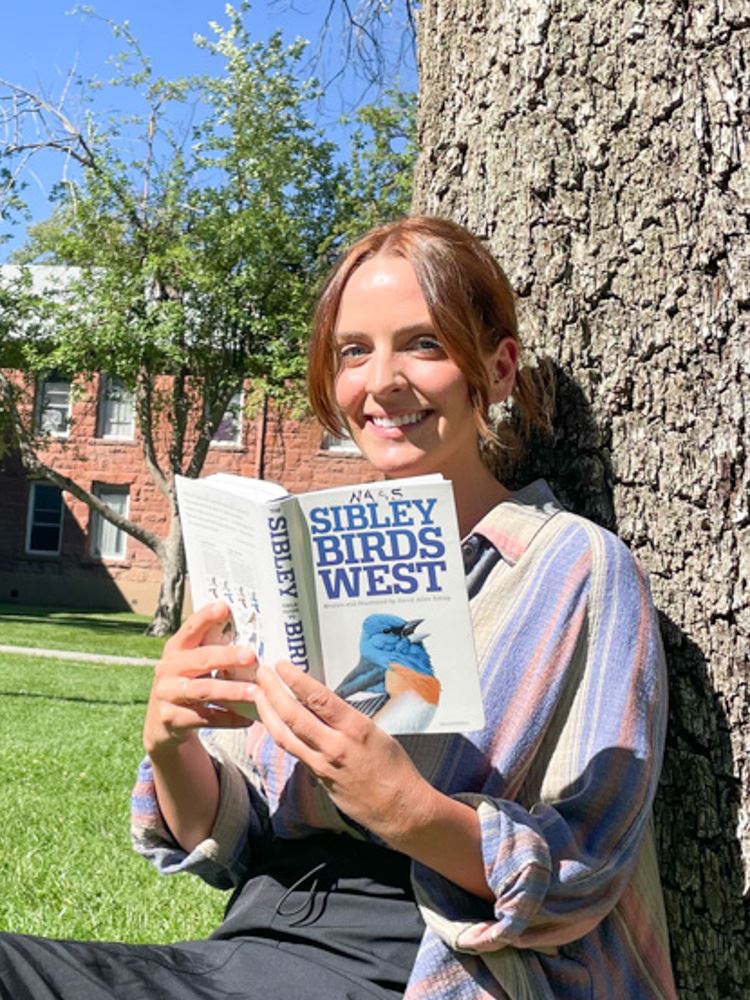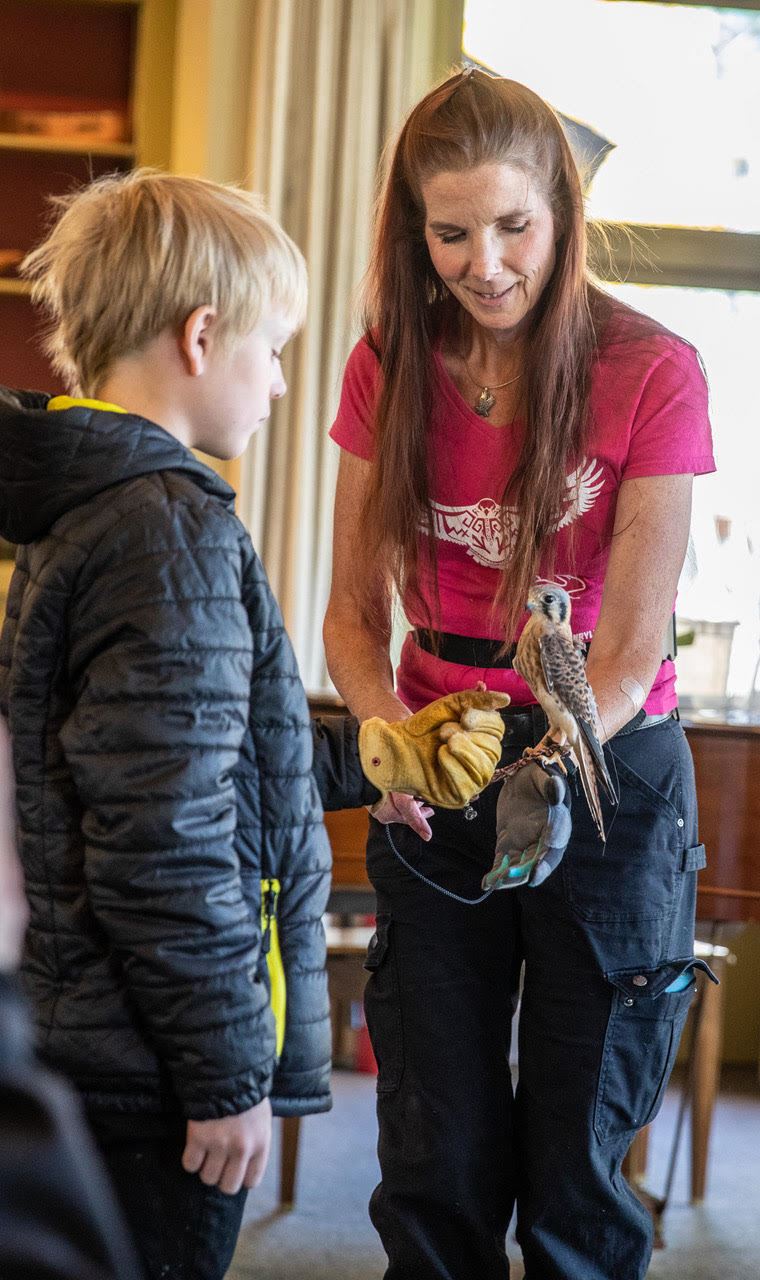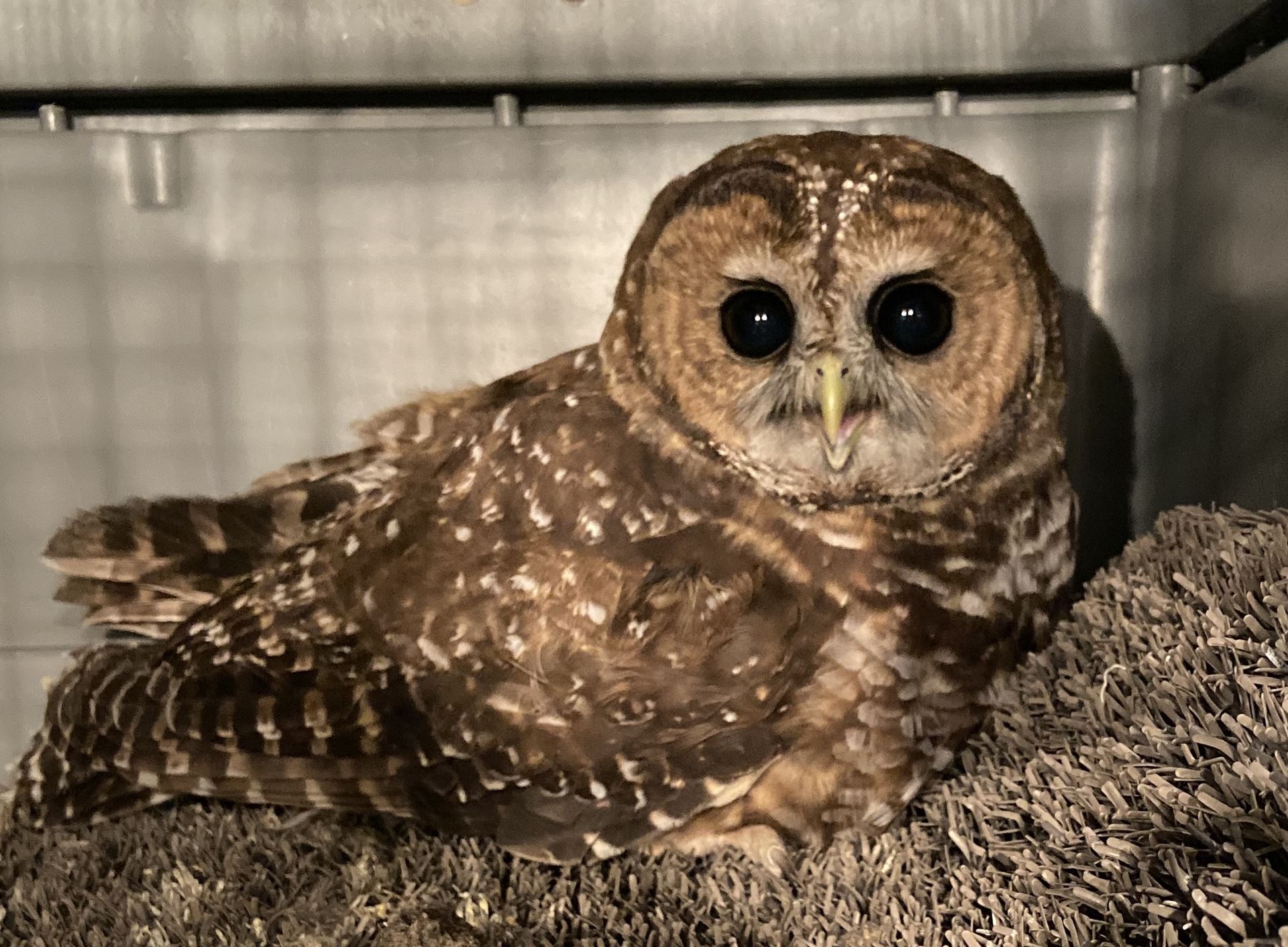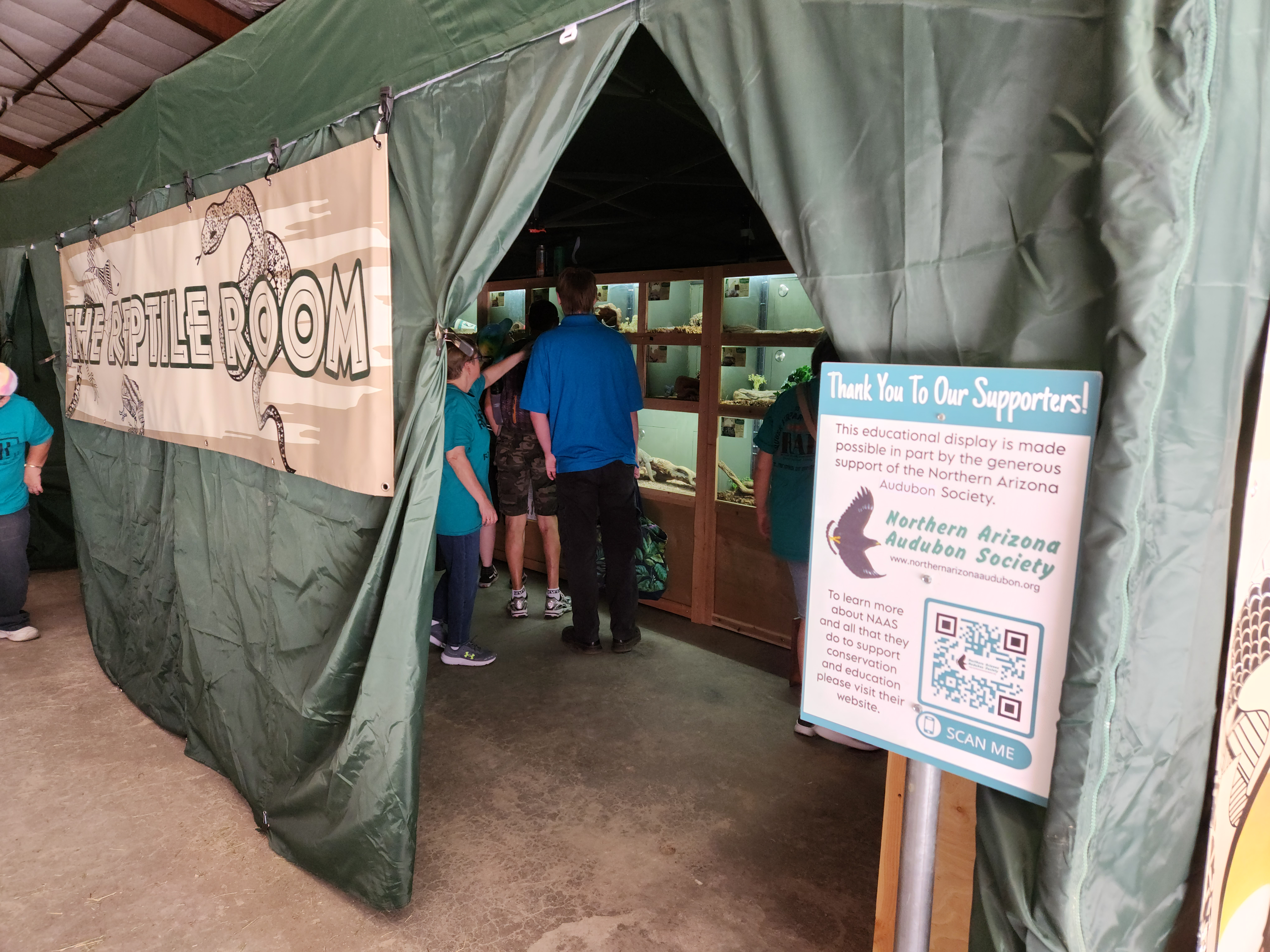| Bird Garden funded by NAASWith the support of a grant from the Northern Arizona Audubon Society, NAU intern Rylie Rosson conceived and created a Bird Garden as a new addition to the Habitat Gardens around the Willow Bend Environmental Education Center at Archuleta County Park in Flagstaff. Rylie directed volunteers from the American Conservation Experience in preparing the site by double-digging amendments into the soil. She then led other garden volunteers in planting grasses, forbs, shrubs, and trees and in creating a pebbled pathway and a small fountain. Finally, Rylie set up a bird feeder and with volunteer Norm Lowe, installed a drip irrigation system donated by the City of Flagstaff. One year later, Rylie’s garden is flourishing with a lively host of birds and pollinators! |
|
 Past Recipients of grants
Past Recipients of grants
Education Grant
Photo by Steve Comstock | International Raptor & Falconry CenterInternational Raptor & Falconry Center (IRFC) is devoted to education through our K-12 and adult programs, throughout the Northern Arizona region. We offer a variety of programs using live raptors creating excitement in the sciences and encouraging conservation. These programs are based in biology and inspire excitement for wildlife sciences. Many are raptor biology presentations that include live raptors discussing their anatomy and biology. Our ecology presentations are focused on raptor habitat ecology and the human/wildlife interface. This program discusses how humans impact raptors and promotes the conservation of wild raptors. Our Raptor and Falconry Experiences are unique in that we take participants out in the field and use free flying raptors to educate and demonstrate what it is like for wild raptors. |
Conservation Grants
Photo by Billy Harvey | Runnin' W Rehabilitation CenterThe Runnin’ W Wildlife Center is the only fully licensed native wildlife rescue and rehab facility specializing in birds and mammals in Northern Arizona and has been operating since 2001. We are required by our licensing agencies to treat all animals brought to us and we do not receive funding from government agencies. We depend on private donations, in-kind support and grant funds. Each year, we take in about 400 wild animals. We anticipate that this number will keep rising due to human encroachment on animal habitat and human-related activities. Also, we presently care for 72 non-releasable wild animals that are permanent residents of our center. Our secondary mission is to use non-releasable wild animals as ambassadors, educating the public about wildlife through outdoor shows, events, and tours. |
Photo by Brett Smith | Sonoran Reptile Room GrantWatch a fun video about the Reptile Room that NAAS help fund: Reptile Room video In 2023, we have attended over 40 events and presentations around Arizona, and through these events, have reached over 110,000 people. The most notable events that we have been able to attend are the Verde Valley Fair, the Yavapai County Fair, and Odysea Aquarium's Conservation Expo. This is a huge increase in our reach and impact compared to the previous year of 2022, where we had an estimated reach of 18,000 people through community events and presentations. A large part of this has been due to the addition of a new display, which you may have seen, that we call "The Reptile Room." In May of 2023, we received a grant from The Northern Arizona Audubon Society, which has greatly helped make this possible! Being able to reach as many people as possible in our community and provide them with a fun, educational, and perspective-changing experience is incredibly important to us and our mission. We believe that giving people an exciting and unique experience with reptiles is the best way to help foster care and understanding of the creatures that we often fear or overlook in conversation. The more people that respect and care for the natural world around us, the more we can all work together to preserve nature in all of its forms. THANK YOU to everyone who has supported us and came to see us at any one these events! We'll see you again soon! |






